Feet more than shoes
Aristotle did not take into account other animals that circulate on the two legs, such as the hen, the duck, and the ostrich that Bernardo Atxaga has recently praised, among others.
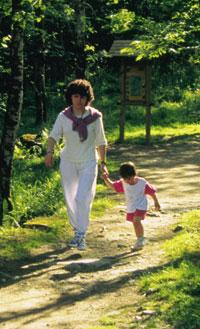
This way of walking generates many similarities between us. It is true, on the other hand, that there are traits that characterize any of us, such as those that help to know our friends from afar. This peculiar and idiosyncratic march may be due to the different length and weight of the different parts of the body, the different length of the fibers of the muscles that move them or that the axes of the joints for movement are not found at all equal. Moreover, the trajectory of each varies according to the current psychological situation.
Process learned
The march of man is a learned process and not the evolution of a spontaneous or congenital reflection against what was previously thought. This was confirmed by Popopova after analyzing the changes in the march of children growing in 1935. The researcher at the National Institute of the Blind of Canada, Scott, stated in 1969 that blind children of birth never strive to walk on their own, and that walking on them is a process that has been demonstrated with total dedication.
It is often believed that the human foot is a semi-rigid structure and that its main function is to have a solid base of the body. And it's the other way around, because if the goal of the foot were like that, it would have gone wrong. As we all know, standing for a long time generates a feeling of fatigue and pain in the feet, so we prefer to sit more than standing. On the other hand, running, walking, jumping or dancing with functionally normal feet (barefoot or comfortable shoes) gets tired much less than standing. Therefore, it seems that the foot has become a dynamic structure, within the locomotor apparatus, which must be studied from this perspective and not as a solid and static base for the body.
History Review
The history of the human foot dates back to ancient times, according to researcher Wood Jones. This amphibian had on its lower extremity a thigh, leg and foot of five fingers. From this structure were born the wing of birds, the apatxa of horses, the foot of monkeys, the human, etc. Our foot is the result of the subsequent evolution of many bones that form the fins of the fish. That is a hypothesis, but not the only one.
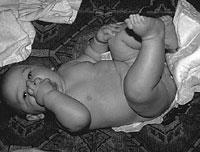
The parity between man and monkey led us to seek what might be the ancestor of both. Some researchers put it in the Miocene about twenty million years ago. This small animal of the Lemuroid family lived in the trees and, instead of resembling the foot of the monkey, belonged to ours.
Researcher Dudley Morton explains that prehistoric foot has much to do with current pathology. It was large, the big toe went inward and was completely separated from the others and its length was reducing from the inside to the outside. The axis of the fingers was not transversely located inward, but parallel to the axis of the foot and passing through the second finger. Therefore, they were able to tip them. The second metatarsal was much longer than the first and thicker than the present, since the weight of the body was based on it. In pathology this foot is known as Neanderthal foot or “foot of the ancients”.
The primitive foot was flexible and grasping, that is, it had the ability to grasp things. The plant was flat and its dome appeared later, when the man takes a vertical position. This prognostic step to orthograde, according to Keith, caused changes in the links and directions of the muscles, molded the heel bone, carrying and bending back and down. Thus arose the dome of the plant.
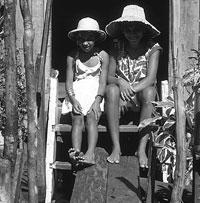
If we analyze the feet of a nine-week fetus and a pronograde, we will see that they are basically similar. The thumb of the fetus is directed inward and separated from the rest. However, for the birth, the plant already appears with its dome and big finger next to the others.
While the hand became a catcher or specialized in fine functions, the foot was adapted to the bearer tasks. This task will be the one that will then direct your pathology. Despite the hypotheses, it is said that this vertical posture expanded the visual field of hominids and anthropoids and created the possibility of using hands for fine purposes. This meant an increase in skull content and brain volume, and in the next step, the development of intelligence.
It is assumed that as the ability to maintain vertical posture was developed, the capacity of the skull was increasing. From Pliopithecus, Proconsul and Oriopithecus to Austrolophitecidos, Homo Habilis, Pitecanthropids and Homo Sapiens.
Excellent machine
These changes in time have allowed adjusting the foot to perform its functions optimally. The balance between your bones and ligaments, with minimal muscle tension, achieves stability. It has the ability to adapt to different pavements, all steps can be performed differently and the required effort is harmonically separated. Moreover, walking on irregular pavement is very relaxing and it is recommended to walk barefoot for a normal developed foot.

The man in the caves had a solid and unresponsive surface. The need for protection forced a successor more delicate than him to protect the feet with the skins of the animals. Having the foot fully adjusted, the man took over his deformation and created antiphysiological footwear.
Feet and footwear
If we analyze the history of footwear, we will see that over the years the laws of physiology and balance of the foot have been clearly violated. XIV. In the eighteenth century pointed tip “leggings” were used that could measure 50 cm. To be able to walk, they joined the tip to the pants with a gold or silver catechist.
In Valois times the footwear was small and flat. It could have a length of 33 cm. Since then comes the saying of “walking safely”. In the time of Henry V, the decorations had to be an hour with the feet immersed in the icy waters to be able to put the feet in those little feet.
However, if the really small shoes have been made somewhere has been in China. The maximum length was 15 cm, which required shortening the foot length. From birth, the father used a special metal instrument that kneaded his daughter's foot and then picked it up with a bandage, causing alterations in the form of talus and varus that gave the fingers claw appearance. The heel bone was vertical and touched the ground with its back. The dome of the plant was only a narrow and deep line. Throughout life these deformed feet were to be on one of the blindfolded feet.
This custom came until the beginning of this century. Apparently, the smaller the footwear, the greater the wedding dowry, so a shoe less than ten centimeters was a great achievement.

It is difficult to know what exactly this Chinese custom caused. According to Galmicher, the Tang dynasty (XIX. The 20th century) the second sovereign Li-la had a daughter (in his opinion he was his lover) called Bang-Hiang. The ruler loved the girl very much, even if the feet were deformed. In the fashion of the courts this deformation seemed to him of good taste and the locals began to imitate it with the feet of their daughters. On the contrary, it can be the second reason of greater weight, more beautiful on the other hand. In fact, the sex life of the Chinese was governed by special laws. For them, the foot was an important secondary sexual trait. The moon, jade, woman and foot have been set. The deformation of the foot that reminds the growing made this “dorsal foot” more attractive.
And what today?
Although they do not reach the level of the previous ones, the current shoes also generate imbalances. XX. Footwear of the twentieth century usually misfits the foot and deforms the same. Women's footwear is the one that has the most mistakes, although those of men or children are not suitable. Hence, according to Joannon, there is a curly pathology. The end of the footwear is pointed and always narrower than the base. Its axis goes through the center and the foot through the second finger. Although often it is not joined by a string that passes in front of the ankle, it is maintained thanks to the fingers crushed in the previous tip.
The inside of the shoe sends the first finger out, forming a “Hallux valgusa” or a joanicote. Remember that in the prehistoric foot the first metatarsal and the finger were directed inward. With the fifth finger, on the contrary, the reverse of the first is produced, which is pushed inwards forming the “fifth varus”. Therefore, as the first goes out and the fifth inward, due to lack of space, the inmates acquire a “hammer shape”, accumulating one over another.
The high heel increases the deformation of the front dotted finish. If the heel bone is bearer and metatarsals lifters, with the heel the specialization of the foot falls from top to bottom, as the sole forms with the floor an angle of 45-50 degrees and the load of pressure moves passing to the fingers. During the tour, the woman can not, lands the foot on this thin heel of little stability and with a blow places the entire sole of the footwear on the ground. The damage this causes can be seen when the woman is dancing. The woman dances on the base, bending the knee while the man goes with the back heel, with the knee fully stretched. In each step, the female pelvis suffers a torsion and the lumbar spine is located in the hyperlordosis. As a result of these runs, the sacro-lumbar structure can develop osteoarthritis throughout life.
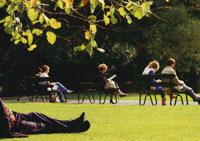
In addition to the mechanical changes produced by the heel in the foot, it produces other interesting changes in the muscles of the limb. The axis of body gravity passes through the plane between hips, with the twins relaxed in vertical position. From here it descends the plane that passes in front of the knees when the quadriceps is relaxed. The muscles and ligaments behind the knee are those that maintain balance. The position on the tip of the fingers is simple, as automatically occurs the displacement of the body forward. However, placing the knees on the tip of the fingers without bending is very difficult and it is mandatory to support them somewhere.
When the heel rises from the ground, all the muscles of the back become electromyographically active thanks to a hysteresis effect for energy conservation, that is, they act as stretched springs.
According to Brauss, the flexors of the plant develop a force of 18.5 kg and the dorsal flexors of the foot of 4.5 kg. The reason is as simple as clear: nature has adopted the mechanical option of putting the body's motor group to the bottom in order to fight gravity. The sural triceps is the knee stabilizer. Its activity varies depending on the position of the foot, when the foot is on the ground is 5% and since the heel bone is a fixed point, it passes to 50% when the heel rises.
This extensive explanation of the muscles and axes explains that, in addition to the mechanical alteration of the foot, long and dotted heels produce a hypertrophy of the muscles of the lower extremity: twins, hamstrings and buttocks, especially, that some like.
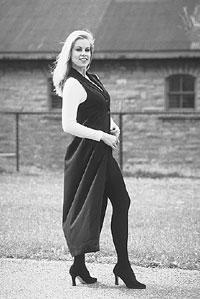
While they can give a stylized image to the dress and create a spectacular march for some, it would be necessary to discard the footwear of long and dotted heel, although it can give a good appearance to the legs and buttocks of women. More yarn (or too much!) When throwing, there are also those who rate this heel as a false quality, from Freud's school.
How is the most suitable footwear?
A well-known saying thus says about the most suitable or physiological footwear: “Footwear must be adapted to the shape and functions of the foot.”
The footwear preferred by this phrase is well tight on the inner arch and wide on the front end. Its axis, like that of the foot, passes through the second finger. In the vicinity of the feet, the inner line of the heel must be clearly surpassed. The sole will be supported by a well arched sole. In addition, the sole of this ideal footwear will not let you suffer a lateral torsion due to the danger of aggravating the balm or balgo.
For this reason, leather will be chosen as a flexible material. The leather slides on a smooth surface and flexible materials on humble surfaces. Joining both, the adhesion is greater. So children should dress. In adults, if there is no static alteration, you can alternate skin and flexible materials, giving priority to leather.
The heel is necessary and its height should be measured below the sole. In children it will be 8-15 mm with respect to the front end of footwear, in adults it will reach 15-20 mm and can taste a higher heel, it is not convenient.
Finally, J. It would be good to remember what Lelievre said: “More than half of our lives we give it with shoes.”
Buletina
Bidali zure helbide elektronikoa eta jaso asteroko buletina zure sarrera-ontzian











